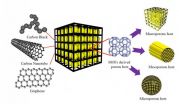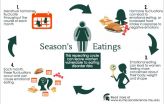Microwave imaging of the breast
Researchers in New Hampshire and Canada describe microwave imaging system that promises better and cheaper breast images for cancer screening -- possible complement to routine mammography
2014-12-16
(Press-News.org) WASHINGTON D.C., December 16, 2014 -- Although currently available diagnostic screening systems for breast cancer like X-ray computed tomography (CT) and mammography are effective at detecting early signs of tumors, they are far from perfect, subjecting patients to ionizing radiation and sometimes inflicting discomfort on women who are undergoing screening because of the compression of the breast that is required to produce diagnostically useful images.
A better, cheaper, and safer way to look for the telltale signs of breast cancer may be with microwaves, said Neil Epstein, a NSERC CREATE I3T postdoctoral fellow at the University of Calgary in Canada. Epstein and his colleagues--engineering professor Paul Meaney of Dartmouth College's Thayer School of Engineering and Keith Paulsen, director of the Dartmouth Advanced Imaging Center and the Robert A. Pritzker Professor of Biomedical Engineering and Professor of Radiology at the Geisel School of Medicine at Dartmouth College -- describe just such a microwave imaging system in the current issue of the journal Review of Scientific Instruments, from AIP Publishing.
Microwave imaging relies upon the known differences in the so-called dielectric properties of cancerous tissue and normal tissue--that is, their ability to conduct electricity or sustain an electric field. In the technique, the breast is suspended in a liquid bath (but not compressed) and closely surrounded by an array of 16 antennae. Each antenna illuminates the breast individually with a very low power microwave signal, with approximately one one-thousandth the power of a cell phone, while the other 15 antennae receive the signals transmitted through the breast; this is repeated for all 16 antennae, providing data that can be used to produce a 3-D representation of the breast, including the location of both normal and cancerous tissue.
"The iterative image reconstruction algorithm computes what the dielectric property distribution must have been to generate the measured signal patterns," Epstein said. "It is quite similar to X-ray computed tomography, where the target is radiated from all of the surrounding directions and the data is synthesized to create an image of the internal structures."
Although microwave imaging systems cannot yet provide the spatial resolution of mammography, they offer better specificity, Epstein said. In other words, once tumors are localized, the microwave imaging systems may be more adept at identifying whether those tumors are benign or malignant--determinations now made through tissue biopsies. "Researchers are realizing that this lack of specificity is a significant limitation for conventional imaging techniques and are looking for alternative ways to enhance it. Microwave imaging could fill this niche, possibly in combination with other modalities," he said.
INFORMATION:
The article, "3D Parallel-Detection Microwave Tomography for Clinical Breast Imaging," is authored by Neil R. Epstein, Paul M. Meaney and Keith D. Pauslen. It will appear in the journal Review of Scientific Instruments on December 16, 2014. After that date, it can be accessed at: http://scitation.aip.org/content/aip/journal/rsi/85/12/10.1063/1.4901936
The authors of this paper are affiliated with the University of Calgary and Dartmouth College.
ABOUT THE JOURNAL
The journal Review of Scientific Instruments, which is produced by AIP Publishing, presents innovation in instrumentation and methods across disciplines. See: http://rsi.aip.org/
Facts on Breast Cancer
14 percent of all new cancers are breast cancer
232,670 people (est.), mostly women, will have developed breast cancer by end of 2014
6.8 percent of all cancer mortality is due to breast cancer
40,000 people (est.) will die from breast cancer in 2014, mostly women
2,899,726 women are living with breast cancer in the United States.
12.3 percent of women will be diagnosed with breast cancer at some point during their lifetimes
Source: cancer.gov
[Attachments] See images for this press release:


ELSE PRESS RELEASES FROM THIS DATE:
2014-12-16
WASHINGTON D.C., December 16, 2014 -- What do you get when you wrap a thin sheet of the "wonder material" graphene around a novel multifunctional sulfur electrode that combines an energy storage unit and electron/ion transfer networks? An extremely promising electrode structure design for rechargeable lithium-sulfur batteries.
Lithium-sulfur batteries are of great commercial interest because they boast theoretical specific energy densities considerably greater than those of their already-well-established cousin, lithium ion batteries.
In the journal APL Materials, from ...
2014-12-16
Analysts at the Energy Department's National Renewable Energy Laboratory (NREL) have used statistical analyses and detailed case studies to better understand why solar market policies in certain states are more successful. Their findings indicate that while no standard formula for solar implementation exists, a combination of foundational policies and localized strategies can increase solar photovoltaic (PV) installations in any state.
In the report, "The Effect of State Policy Suites on the Development of Solar MarketsPDF," NREL researchers examined a variety of policy- ...
2014-12-16
People who occupy the extreme ends of the political spectrum, whether liberal or conservative, may be less influenced by outside information on a simple estimation task than political moderates, according to new research published in Psychological Science, a journal of the Association for Psychological Science.
The research, conducted by psychological scientists Mark J. Brandt and Anthony Evans of Tilburg University and Jarret T. Crawford of The College of New Jersey, suggests that because political extremists hold their own beliefs to be superior to the beliefs of others, ...
2014-12-16
New Rochelle, NY, December 16, 2014-Consuming caffeinated or sugary drinks can affect the body's metabolism, causing changes in heart and respiratory rate and weight gain. The results of a new study exploring whether individuals respond differently to caffeinated drinks that do or do not contain sugar and to sugar alone are published in Journal of Caffeine Research: The International Multidisciplinary Journal of Caffeine Science, a peer-reviewed publication from Mary Ann Liebert, Inc., publishers. The article is available free on the Journal of Caffeine Research website ...
2014-12-16
Eliminating health disparities between races is a goal of many groups and organizations, but a team of sociologists suggests that finding the reasons for the differences in the timing of black and white deaths may be trickier than once thought.
Life expectancies for black people are shorter and more uncertain, on average, than to those of whites, according to Glenn Firebaugh, Roy C. Buck Professor of American Institutions and professor of sociology and demography, Penn State. A higher lifespan variability -- the variability in the ages at which people die -- among blacks ...
2014-12-16
Unauthorized immigrants who previously have been removed from the United States are more than 2.5 times more likely to be rearrested after leaving jail, and are likely to be rearrested much more frequently than those who have never been removed, according to a new RAND Corporation study.
The findings generally support strategies adopted by federal immigration authorities and some law enforcement agencies to focus their immigration enforcement efforts on immigrants who previously have been removed, who are viewed as posing a bigger criminal threat.
Researchers studied ...
2014-12-16
Unlike in mathematics, it is rare to have exact solutions to physics problems.
"When they do present themselves, they are an opportunity to test the approximation schemes (algorithms) that are used to make progress in modern physics," said Michael Strickland, Ph.D., associate professor of physics at Kent State University.
Strickland and four of his collaborators recently published an exact solution in the journal Physical Review Letters that applies to a wide array of physics contexts and will help researchers to better model galactic structure, supernova explosions ...
2014-12-16
The genetic abnormality that drives the bone cancer Ewing sarcoma operates through two distinct processes - both activating genes that stimulate tumor growth and suppressing those that should keep cancer from developing. These findings by Massachusetts General Hospital (MGH) investigators, published in the November issue of Cancer Cell, may lead to new therapies targeting these aberrant mechanisms.
The second most common bone cancer in children and young adults, Ewing sarcoma is caused by a chromosomal translocation - switching of genetic segments between two different ...
2014-12-16
EAST LANSING, Mich. - 'Tis the season of plenty of food and drink. While celebrating should be joyful, for some women, it's not. All the holiday temptations can add another layer to an already complicated biological process.
It's well known that women undergo hormonal changes every month due to the menstrual cycle. These changes can cause women to eat more, which is a natural, biological occurrence.
However, Michigan State University Foundation Professor Kelly Klump has found that the increased food intake causes some women to become much more preoccupied with their ...
2014-12-16
ITHACA, N.Y. - In the fight against global warming, carbon capture - chemically trapping carbon dioxide before it releases into the atmosphere - is gaining momentum, but standard methods are plagued by toxicity, corrosiveness and inefficiency. Using a bag of chemistry tricks, Cornell materials scientists have invented low-toxicity, highly effective carbon-trapping "sponges" that could lead to increased use of the technology.
A research team led by Emmanuel Giannelis, the Walter R. Read Professor of Engineering in the Department of Materials Science and Engineering, has ...
LAST 30 PRESS RELEASES:
[Press-News.org] Microwave imaging of the breast
Researchers in New Hampshire and Canada describe microwave imaging system that promises better and cheaper breast images for cancer screening -- possible complement to routine mammography




